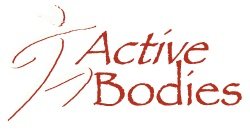Foods To Reverse Atherosclerosis
Atherosclerosis is a build up of cholesterol plaque in the walls of arteries causing obstruction of blood flow. If an artery feeding the heart or brain is significantly occluded then oxygen rich blood has difficulty reaching those tissues potentiating the likelihood of heart attack or stroke, respectively.
The development of atherosclerosis begins in childhood and may be exacerbated via lifestyle, poor nutrition and/or the lack of a regular exercise program. Combined with arteriosclerosis (rigid arteries) that comes with aging, atherosclerosis may advance significantly as the years go by leading to an occlusion of the blood vessel. The consequences of an occluded artery may ultimately result in death.
As you read this now you are already in the midst of the atherosclerotic battle. The accumulation of material has been taking place slowly for quite some time. Cholesterol - and other contributors, primarily triglycerides and calcium - are sticking to the insides of your blood vessels. Without consistent accountability these deposits will continue to bulge until the vessel is completely blocked off.
However, there is good news! You may still have an opportunity to begin reversal of this inflammatory process. Research indicates early-stage atherosclerotic plaques are entirely reversible, while more advanced plaques developed a resistance to medical and nutritional intervention. Thus, the key to altering arterial plaque accumulation is the immediate implementation of good nutritional and exercise habits.
First and foremost, foods high in saturated fats should be avoided as they contain the key culprits to the development of atherosclerosis. Cholesterol (necessary for cellular function) and triglycerides are two of the major components of atherosclerosis and should be closely monitored.
Next, choose foods that possess valuable nutrients necessary for combating the process of atherosclerosis. Make these foods become a regular part of your healthy eating plan.
Lastly, be sure to engage in a regular exercise program to burn fat calories. Ideally, the program should include the combination of resistance training and steady-state cardio that lasts a minimum of 30 minutes 2-3 times each week.
Listed below are the key nutrients that need to be a part of your daily diet to help reverse atherosclerosis followed by a suggested meal.
This is by no means is a replacement for medical advice or treatment. The information provided is for general reference only. Consult your doctor. Request a blood workup as well as a CAC scan (Coronary Artery Calcium score; used to detect plaque build-up in the blood vessels) to assess your status.
Be proactive and take the fight to the causes of atherosclerosis. The investment you make in your health now will pay dividends with reduced medical bills later.
Sample meal.
• 8oz Green tea
(Lowers oxidative stress, cholesterol and inflammation)
• 4 oz Baked salmon
(Contains omega-3 fatty acid; lubricates surface of blood vessels, prevents fat from 'sticking' to surface)
• Minced garlic
(Contains antioxidants; helps reduce lipid content in the arterial wall)
• ½ cup Sauerkraut
(Provides probiotics; helps lower blood pressure)
• Salad
• 1 cup Arugula
(Provides fiber and potassium; helps lowers blood glucose)
• 1 Tbs Olive oil
(Omega-3 fatty acid; coats the lining of the blood vessel)
• 1 Tbs Balsamic vinaigrette
(Contains antioxidants, helps lower blood pressure)
• Pomegranate seeds
(Powerful antioxidants; aids in prevention of atherosclerotic plaque)
• 1 tsp Parmigiano Reggiano cheese
(Contains vitamin K2; helps prevent damage to blood vessels)

